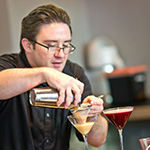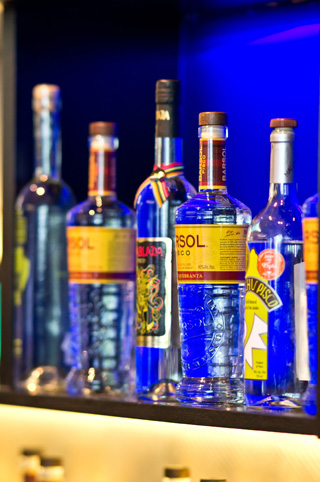To me, the clear Peruvian spirit called pisco is shrouded in romance. It is rich with history and every bottle tells a different story. I have been behind the bar for almost ten years and decided a long time ago that it was my destiny to dedicate myself to the pursuit of spirits and mixing. Four years ago, I began my journey in San Francisco with La Mar Cebicheria—the brainchild of Latin America’s most treasured chef, Gaston Acurio—but more importantly, the ride continued with the wonderful cuisine of Peru and the amazing spirit they call Peruvian pisco.
Working at La Mar, I was overwhelmed by the truly unique and imaginative flavor profiles of Peruvian food, but my focus quickly switched to the one-time, pot-distilled brandy: pisco. My first taste made me step back and search my mind in an attempt to relate the experience to something. Was this grappa? Was it an eau de vie? Where are all these floral notes coming from? At that moment I knew that I had entered the next chapter of my professional life.
Unlike other brandies around the world, pisco pours clear, almost pristine, and is bottled at the height of its distillation strength. The clarity of this spirit took me to Peru to understand its origins and observe the creation of pisco directly from its grapes in Peru.
The pisco vineyards extending over the vast dessert of the Ica valley were remarkable sights. The pride of the Peruvians was evident as they related the stories, dense with the passion, pain, and joy of its history. I learned that pisco is the oldest spirit in the Western Hemisphere, and it was the Spanish who first introduced these grapes to South America. And although pisco was originally born out of Spanish knowledge, it was the indigenous Peruvians who perfected the process of distilling, blending and exporting.
The Peruvians are indignant that Chile boasts a version of its pisco, aged in wood and distilled to high proofs, and then cut down with watter. And they are right; the Chilean brandy is not the pisco of centuries ago, and if one wants to experience the spirit in its purest form, you must pour the pisco of Peru.
Something of a current trend in bartending circles, pisco is not new to North America; it was actually introduced during the California Gold Rush when the boom of immigrants from Europe making the journey to California around the Cape of South America brought pisco to West Coast shores. As these clipper ships braved the seas, they would stop at the port of Pisco, Peru to re-supply, and it became customary to leave port with pisco for the onward journey. The saloon owners of San Francisco were quick to notice this new and different spirit traveling with the wave of immigrants. Bartenders, like Duncan Nicol, created legendary cocktails with this new brandy, and at the turn of the 19th century, it was said that a trip to San Francisco was not complete without a Pisco Punch by Nicol at the Bank Exchange Bar.
Upon learning this history, I knew that my path was set in liquid gold. Here I was, launching La Mar on the San Francisco waterfront, reintroducing the spirit to a city that had forgotten its love affair from over century ago. I employed the techniques of the traditional cocktails with a spirit that was emulated, respected, and loved by a heritage of my brethren bartenders. Through La Mar Cebicheria, pisco in San Francisco was gaining traction again.
Of all the cocktails made with pisco the Pisco Sour reigns king. Created in 1915 by an American named Victor Morris living in Lima, Peru, the pisco sour has transcended race, time and borders. It is frothy and acidic with a perfect balance of sweet and sour. Three drops of angostura bitters rest on top to signify the Holy Trinity—a way to bless the cocktail before giving to the patron. The Sour is the national cocktail of Peru and, while it is known that January 4th is National Pisco Sour day in country, it is celebrated daily throughout the world.



![Making Mealtime Matter with La Familia: Easy Sofrito [Video]](https://thelatinkitchen.com/wp-content/uploads/2015/10/sofrito-shutterstock__0-500x383.jpg)
![Easy Latin Smoothies: Goji Berry Smoothie [Video]](https://thelatinkitchen.com/wp-content/uploads/2015/12/goji_berry-shutterstock_-500x383.jpg)
















![Fun and Fast Recipes: Fiesta Cabbage Salad [Video]](https://thelatinkitchen.com/wp-content/uploads/2015/11/fiesta_cabbage_slaw-shutterstock_-500x383.jpg)









